| "Descrizione" by Handy23 (4274 pt) | 2023-Jan-02 09:23 |
Review Consensus: 10 Rating: 10 Number of users: 1
| Evaluation | N. Experts | Evaluation | N. Experts |
|---|---|---|---|
| 1 | 6 | ||
| 2 | 7 | ||
| 3 | 8 | ||
| 4 | 9 | ||
| 5 | 10 |
Alcohol denat. is the INCI i.e. cosmetic term for a type of denaturing alcohol, The American FDA specifies the composition of SD Alcohol 39-C as denatured in which 1.0% Diethyl Phthalate (DEP) is present, whereas in Europe the regulations do not specify the additives added to the alcohol. It is, however, ethyl alcohol.
It appears as a colourless transparent, volatile, flammable liquid that can be mixed with water. Hygroscopic. Incompatible with strong oxidising agents, peroxides, acids, acid chlorides, acid anhydrides, alkali metals, ammonia. It is a reducing alcohol that cannot be mixed with potassium dichromate, chromic acid, osmium and other oxidising agents. It can dissolve fats and lipids and precipitate nucleic acid.

What it is used for and where
Normal ethyl alcohol is 95% alcohol and never pure alcohol.
Medical
The most common use of ethanol in medicine is its external application as an antiseptic, disinfectant and antimicrobial. The action of ethanol is broad-spectrum and counteracts mycobacteria with the exception of sporigenic bacteria, vegetative bacteria, fungi (which also have some viral and bacterial resistance to alcohols) and a number of viruses. Contrast activity takes place by interfering with cell metabolism and denaturing cytoplasmic and membrane proteins. The main applications are for surface disinfection and skin antisepsis, however, due to its rapid evaporation, ethanol is combined with other antiseptics. The WHO (World Health Organisation) has classified ethanol as an essential medicine in hand washing and disinfection (1) and the FDA (Food and Drug Administration) considers ethanol safe for human health although there is a risk of absorption and long-term exposure. This study ascertained the efficacy of ethanol over a 30-second period against: SARS coronavirus, MERS coronavirus, ebolavirus, influenza A viruses including human type H3N2, avian type H3N8 and human type H1N1, influenza B ivirus, HIV, HBV, vacciniavirus, duck hepatitis B virus, togavirus, pseudorabies virus Newcastle disease virus, bovine viral diarrhoea virus, zikavirus, herpes simplex virus types 1 and 2 and RSV as well as numerous other viruses, all of which are listed in the study and represent the majority of clinically relevant viruses (2).
It is the most widely used compound for sclerotherapy of cysts where it has demonstrated excellent tolerance, low cost and repeatability of sclerosis in the presence of large cysts.
It has been indicated as a local analgesic agent in the treatment of spasticity and chemical neurosis, a procedure using ethanol, phenol or other alcohols injection after contrast medium injection. Other analgesic indications include neuropathic pain, manifestations of pain caused by viruses such as shingles, neuralgia and other types of pain.
For ethanol chemoembolisation, the guidelines (3) published in the 2016 edition by the e Japanese Society of Interventional Radiology (JSIR), specify aspects for the safe and effective use of absolute ethanol, such as the properties of absolute ethanol and recommendations, complications, methods of use and other aspects in typical pathologies.
Contraindications
Ethanol abuse leads to severe intoxication, neurobiological and neurochemical behavioural problems, and serious toxic effects on the liver, brain, and heart. In adolescents in particular, alcohol consumption may impair brain function and worsen health status in adulthood (4).
The concentration of ethanol in the blood varies depending on whether the subject is fasting or has consumed food, but ranges from a minimum of 1 mM, where no effects are noticed, to over 100 mM, which is highly lethal (5).
What natural products can counteract the toxic effects induced by ethanol? Vitamins, which have antioxidant functions, polyphenols extracted from plants, phenols such as resveratrol, flavonoids can generally help. However, it should be noted that the quantities of these components, when taken with vegetables, fruit and other foods, are not sufficient to prevent liver damage. Antioxidants such as catechins found in tea, blueberries are also mentioned in the scientific literature. Garlic with its enzymes, onion powder containing flavonols and sulphurates can also reduce liver damage. And then ginger, carnosine, cannabidiol.
Food
Used in the production of alcoholic beverages, wine.
Chemistry
Basic chemical raw material used in industrial processes for the production of acetic acid, ethylamine, acetaldehyde, ethyl acetate, ethyl chloride etc. Analytical reagent. Organic solvent.
Cosmetics
Used mainly as a solvent and preservative.
Other uses
- Important organic solvent used in sanitary products, cosmetics, oils.
- Due to its low melting point at -114.5 °C it is used in antifreeze products.
- Nitro paints, paint solvent, fuels, inks.
Safety
The Cosmetic Ingredient Review Expert Panel expressed a positive opinion on the ingredient/health ratio for Alcohol Denat.
The CIR Expert Panel has previously conducted safety assessments of t-Butyl Alcohol, Diethyl Phthalate, Methyl Alcohol, Salicylic Acid, Sodium Salicylate, and Methyl Salicylate, in which each was affirmed safe or safe with qualifications. Given their use as denaturants are at low concentrations of use in Alcohol, the CIR Expert Panel determined that Alcohol Denat. denatured with t-Butyl Alcohol, Diethyl Phthalate, Methyl Alcohol, Salicylic Acid, Sodium Salicylate, and Methyl Salicylate is safe as used in cosmetic formulations with no qualifications. Likewise, because they are denatured with either t-Butyl Alcohol, Diethyl Phthalate, or Methyl Alcohol, SD Alcohols 3-A, 30, 39-B, 39-C, and 40-C all are considered safe as used. The Panel considered the available data for Denatonium Benzoate and SD Alcohol 40-B to be sufficient to support the safety of these ingredients in cosmetics. Denatonium Benzoate is sufficiently bitter that it is an effective denaturant at only 0.0006%. The Panel recognized that data on dermal penetration of Denatonium Benzoate were not available, but considered that the available data on lidocaine, a smaller structurally related chemical, indicates that dermal exposure does not result in measurable systemic exposure. The available data, however, were not sufficient to support the safety of Quassin, Brucine, and Brucine Sulfate, Alcohol Denat. denatured with those denaturants, or SD Alcohol 39 and SD Alcohol 40 (SD Alcohols denatured with Quassin, Brucine, and/or Brucine Sulfate), and in order for the Expert Panel to reach a conclusion for these denaturants, additional data are needed. (6)
The most relevant studies on this ingredient have been selected with a summary of their contents:
Typical commercial product characteristics Ethanol/alcohol
| Appearance | Colorless transparent liquid |
| Boiling Point | 72.6±3.0°C at 760 mmHg |
| Melting Point | -114°C |
| Flash Point | 8.9±0.0°C |
| Density | 0.8±0.1 g/cm3 |
| Vapor Pressure | 82.8±0.2 mmHg at 25°C |
| Refraction Index | 1.354 |
| PSA | 20.23000 |
| LogP | -0.19 |
| Acid (acetic acid) | 10 max mg/L |
| Ethylacetate | <2 mg/L |
| Acetaldehyde | ≤0.002% |
| Methanol | 16 mg/L |
| Higher Alcohol(c3-c5) | 200 mg/L |
| Evaporation residue | ≤0.0005% |
| Acidity as H+ | ≤0.1 mmol/100g |
| Basicity as OH- | ≤0.0005 mmol/100g |
| Carbonyl compounds as C | ≤0.003% |
| Isopropanol(CH3)2CHOH | ≤0.003% |
| Methyl alchol | ≤0.015% |
| Safety | 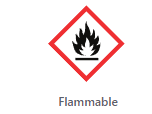 |
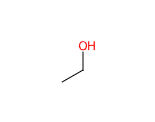 | 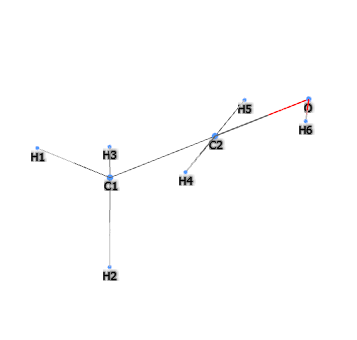 |
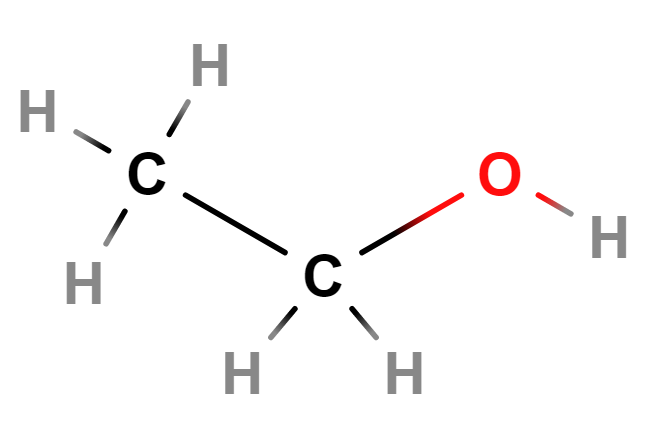 | 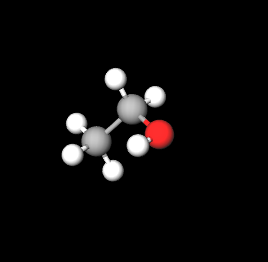 |
- Molecular Formula C2H6O
- Linear Formula CH3CH2OH
- PMolecular Weight 46.07
- Exact Mass 46.041866
- CAS 64-17-5
- UNII 3K9958V90M
- EC Number 200-578-6
- DSSTox Substance ID
- IUPAC ethanol
- InChI=1S/C2H6O/c1-2-3/h3H,2H2,1H3
- InChl Key LFQSCWFLJHTTHZ-UHFFFAOYSA-N
- SMILES CCO
- MDL number MFCD00003568
- PubChem Substance ID 329757771
- ChEBI 16236
- Beilstein 1718733
- NCI c2190
- ICSC 0044
- NSC 85228
- RTECS KQ6300000
- RIDADR 1170
- UN 1987
- RXCUI 448
- FEMA 2419
- NACRES NA.25
Synonyms
- Ethyl alcohol
- Alcohol
References________________________________________________________________
(1) World Health Organization. (2015). The selection and use of essential medicines: report of the WHO Expert Committee, 2015 (including the 19th WHO Model List of Essential Medicines and the 5th WHO Model List of Essential Medicines for Children) (Vol. 994). World Health Organization.
(2) Kampf G. Efficacy of ethanol against viruses in hand disinfection. J Hosp Infect. 2018 Apr;98(4):331-338. doi: 10.1016/j.jhin.2017.08.025. Epub 2017 Sep 5.
(3) https://www.jstage.jst.go.jp/article/interventionalradiology/3/1/3_3-1G3/_pdf/-char/en
(4) Khan KM, Bierlein-De La Rosa G, Biggerstaff N, Pushpavathi Selvakumar G, Wang R, Mason S, Dailey ME, Marcinkiewcz CA. Adolescent ethanol drinking promotes hyperalgesia, neuroinflammation and serotonergic deficits in mice that persist into adulthood. Brain Behav Immun. 2022 Jul 27:S0889-1591(22)00334-8. doi: 10.1016/j.bbi.2022.07.160.
(5) Contreras-Zentella ML, Villalobos-García D, Hernández-Muñoz R. Ethanol Metabolism in the Liver, the Induction of Oxidant Stress, and the Antioxidant Defense System. Antioxidants (Basel). 2022 Jun 26;11(7):1258. doi: 10.3390/antiox11071258.
(6) Cosmetic Ingredient Review Expert Panel. Final report of the safety assessment of Alcohol Denat., including SD Alcohol 3-A, SD Alcohol 30, SD Alcohol 39, SD Alcohol 39-B, SD Alcohol 39-C, SD Alcohol 40, SD Alcohol 40-B, and SD Alcohol 40-C, and the denaturants, Quassin, Brucine Sulfate/Brucine, and Denatonium Benzoate. Int J Toxicol. 2008;27 Suppl 1:1-43. doi: 10.1080/10915810802032388.
| Evaluate |

